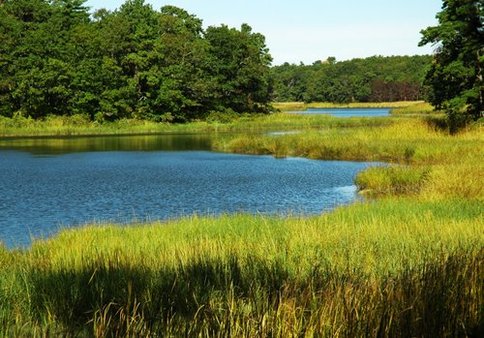 Mashpee Pond on Cape Cod. Courtesy www.mass.gov. Mashpee Pond on Cape Cod. Courtesy www.mass.gov. Rising sea levels and fiercer storms are costing the U.S. 80,000 acres of wetlands per year, according to a study by the Yale School of Forestry and Environmental Studies. Wetlands are vital for improving drinking water by filtering and detoxifying runoff. They also absorb storm water, provide a baffle for tidal flooding and provide habitat for birds, fish and other marine life. Along with coral reefs and rainforests, coastal wetlands are among the most productive ecosystems on earth. While wetlands on Atlantic coast from Maine to Florida, including Cape Cod, are threatened by coastal development, the Gulf of Mexico has seen the greatest decrease in wetlands due to frequent and severe hurricanes.
A sea level rise of just one foot would have enormous impact on wetlands and shoreland development on Cape Cod, according to the U.S. Government. A new interactive map using data from the National Oceanographic and Atmospheric Administration, The U.S. Geological Survey and the U.S. Census, illustrates the impact of climate change in the decades to come. You might also like: Interactive Map Shows Advance of Cape Cod Flood Zones
0 Comments
Leave a Reply. |
Maureen Green
|





